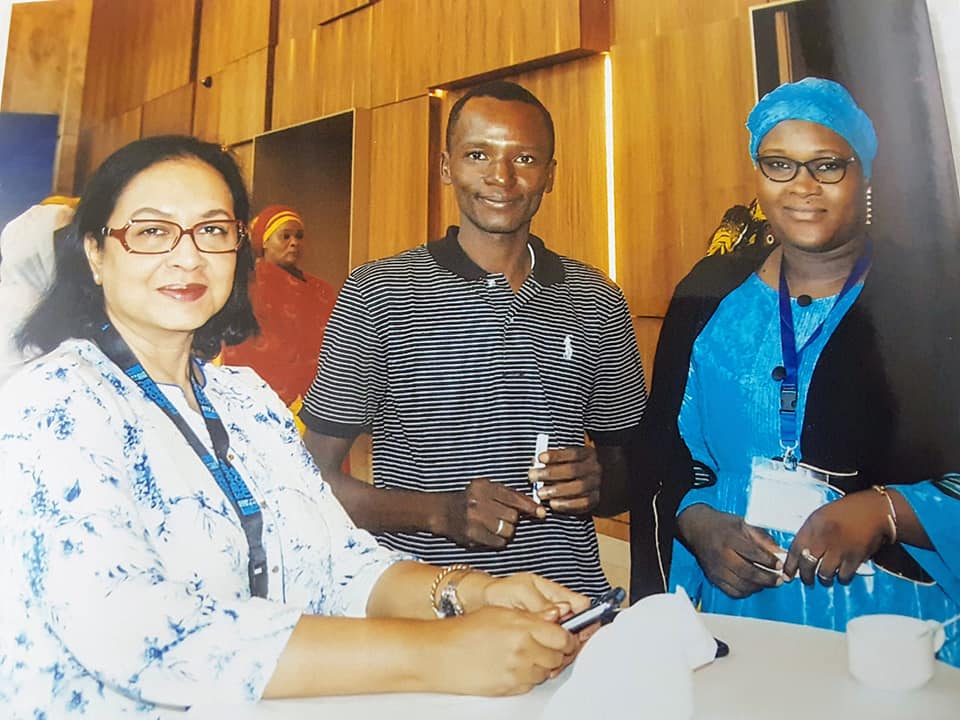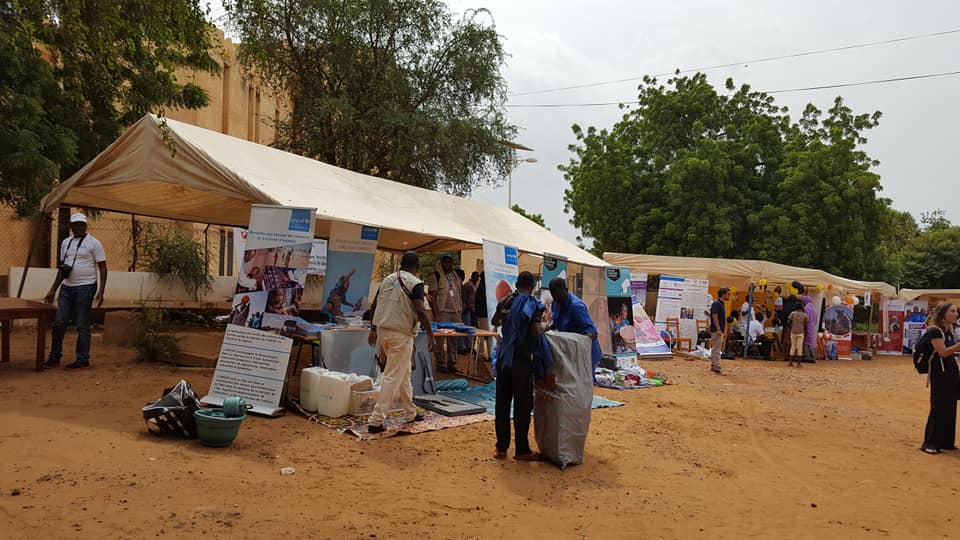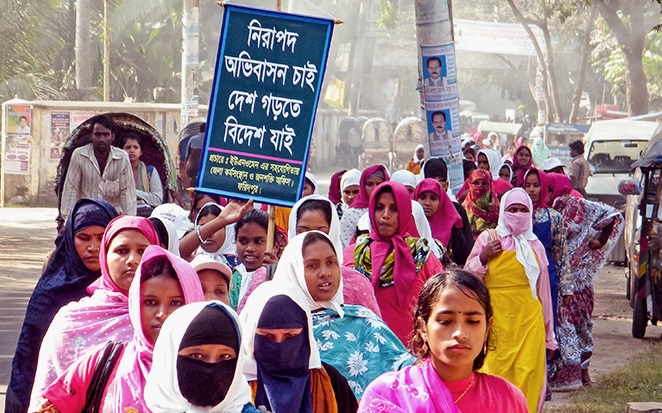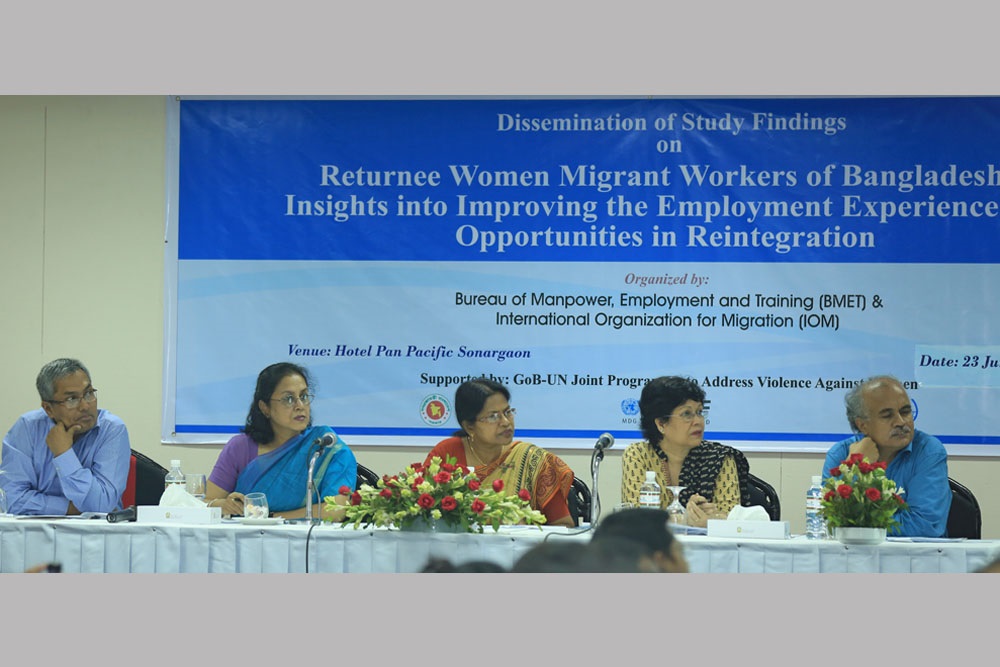13 Women Empowerment in Bangladesh and Niger
Naheed Ahmed
About Naheed Ahmed:
I am a female development worker with nearly 2 decades (24 years) of experience focusing my work on promoting Gender Equality and Women’s Empowerment (GE-WE) as part of promoting Rights Based Approach (RBA) in development initiatives. My work experience ranges from INGO (ActionAid Bangladesh & UK, to bilateral aid agency (Canadian International Development Agency – CIDA) and multilateral aid agency (UN Women) at various levels and in various locations of the world. Academically, I hold a Master degree in Public Administration from the University of Dhaka and an M Phil in Development Studies from the University of Geneva.
Throughout my work experience in Asia and Africa, I pursued community mobilization for development and building social cohesion as a precondition for promoting and advancing the cause of women’s rights. I am sharing two stories from my work life experience to demonstrate how community work had positively influenced the development initiatives undertaken.
My first case is from the West African state of Niger and is an example of how community development played an important role in making effective response while addressing the needs of women and girls during Humanitarian response (2019-20). In a conflict zone, mobilizing the community is crucial not only for shaping the identity but also for collective action towards building social cohesion and resilience.

Case study 1: humanitarian response in Niger
Context:
Niger is among the most vulnerable countries in the world due to multiple issues related to both internal and external factors including those of climate change (eg. Floods, drought etc). Additionally, since 2015, following a violence at the border with its neighbour Nigeria, the region and the country witnessed a massive displacement of population necessitating humanitarian delivery. When a project on humanitarian assistance was initiated, data provided by UNHCR and the government (June 2018) indicated approximately 118,781 Nigerian refugees with 104,288 displaced persons in north-east Diffa region due to attacks of Boko Haram. Of them about 70% were women and youths. More and more people were arriving in different camps everyday and the situation was going beyond the capacity of the humanitarian actors to handle the crisis. The situation was particularly grim for women and girls. This drew international attention for urgent action in Nigeria and Lake Chad basin.
The organization[1] I was working to bring need based interventions to the affected women and girls, raise awareness among the Humanitarian actors for gender sensitive services and build social cohesion as a precondition for peace and stability in this conflict affected region.
What are the usual issues faced by women during humanitarian response?
Discriminatory practices and norms exist even before any crisis happens. But both conflicts and disasters exacerbate the sufferings of women and girls as they are disproportionately exposed to risk, increased loss of livelihoods, insecurity of lives and properties during and in the aftermath of disasters. In this particular conflict zone, women and girls suffered more from the atrocities of Boko Haram and the displacements that took place. While women and girls have different kind of needs for services, their voices are often absent from any formal mechanisms of emergency interventions.
For the project under discussion, women’s needs were assessed and classified under the following:
- Protection from sexual and GBV[2]including rape and sexual slavery
- Freedom from economic vulnerability (lack of livelihoods and IGA[3]) and
- Inadequate attention to the specific needs of women and girls in humanitarian response by the actors
Based on this understanding, the responses were planned to achieve two broad outcomes:
- a) Increasing the access to adequate services for women and girls from the community which included the refugees, IDPs and survivors of SGBV and
- b) Mainstreaming of Gender Equality and Women’s Empowerment in humanitarian response
Considering that the crisis was taking place in a conflict situation, the interventions focused on building social cohesion within the community especially the women from three different strands: the refugees, the displaced and the host community for sustained peace and security in the region. The project was initially designed for 12 months but was later extended to 18 months due to the outbreak of COVID-19.

The project was located about 1400 km north-east from the capital and a small team was deployed at sight for close monitoring of the implementation of the project activities. Periodic field missions were organized by concerned team members from the Country Office at Niamey.
Framework followed and Primary activities undertaken:
The project was designed according to the LEAP a global model of UN Women at that time. The model along with a Guidance note[4] were developed at the HQ level and was being followed by the agency for Humanitarian responses globally.
The model focused on crisis affecting women and girls and classified the potential interventions in the following categories of needs:
a) Protection needs would cover the services for prevention of violence, psycho-social and trauma counselling, safety mechanisms within the camps and community.
b) Leadership and participation in strengthening social cohesion among the women from the three segments of the community for stronger collective action to promote and protect rights of women.
c) Enhancing livelihood opportunities for women through skills development for economic empowerment remained a prime focus of the model as women quickly lose their small livelihoods and assets during emergency or disaster.
Some major activities that contributed the most to the targeted community were as follows:
a) Construction of Women’s Cohesion Spaces: These spaces were extremely useful for bringing together the community women from the three segments: refugees, internally displaced and the host community. The activities organized at the Cohesion Spaces brought the women together, facilitated interactions sharing their common problems and finding potential solutions. Over time, these designated women’s spaces also facilitated the engagement of men and boys from the community to participate in various awareness raising and protection activities.
b) Mixed Management Committees from among the community for managing the Cohesion spaces (COGES)[5]:This arrangement cultivated leadership qualities among women including the deployment of community workers to identify beneficiaries for various training programs.
c) Reinforcement of Health services: In a conflict situation, it is natural to find collapse of existing structures/mechanism to provide need-based services to the affected population. This particular activity facilitated the revamping of the existing health facilities in three districts expanding beyond the psychosocial support to the survivors of violence in the camp, and to resume regular reproductive health services for women and girls. Women regained confidence in the health services and started to use them for their health needs. This activity also brought together other important stakeholders: health service personnel from the government and other aid agencies and their beneficiaries. It became an example of community engagement bringing hope to the community.
d) Community sensitization: The cohesion spaces rendered the venue for regular awareness sessions for women, girls, men and boys to learn about women’s rights, discriminatory norms and practices, as well as to devise mechanisms to prevent violence and protect the rights of women and girls. These sessions along with their innovative approaches induced the community to more cohesion. The space and their management proved equally useful for sensitizing the community during the COVID-19 outbreak.
e) Another strong emphasis was given to enhance women’s economic capacity. This activity created huge enthusiasm among women in the community to learn skills that would bring them household income and reduce dependence. As the skills development was accompanied by start-up kits, it was a real opportunity for them to learn, practice and grow. This particular activity created women’s sub-groups based on skills leading to community empowerment.
Lessons learned:
Needless to say that the implementation of the project was temporarily stalled by the global outbreak of COVID-19 for a few months and hence was extended for six months by the donor.
The Cohesion spaces became a symbol of all social activities for women and girls. These were recognized by the community as ‘Women’s spaces’ which united women from all sections of the community to the events organized here. The cohesion spaces were also helpful in disseminating information on COVID-19 prevention protocols among women and girls.
With a strong focus on enhancing livelihood options for women, various skills development sessions were organized for women. During the outbreak of the COVID-19 pandemic, women’s groups were mobilized to produce masks and hygiene slips for use in the refugee camps. These products were instantly marketed to the Humanitarian agencies working in the camps and shelters for distribution. This particular incident was an instant success for the women producers at the project site.
Outreach programs of building awareness on women’s rights, such as protection from violence, were made easier through regular sessions as well as during special days (e.g., international women’s day, 16 days of activism, humanitarian day etc).
_____________________________
[1] UN Women – United Nations Entity for Gender Equality and Women’s Empowerment
[2] Gender based violence
[3] Income Generating Activities
[4] Guidance Note: Livelihood in LEAP, UN Women
[5] Comite de Gestion – Management Committees
Case study 2:
Protecting the rights of women migrant workers of Bangladesh

Photo: Migration as a Right by UN Women Asia and the Pacific is licensed under a CC BY-NC-ND 2.0 License.
In Bangladesh, women make up only 4.12 per cent of all migrant workers . However, this wasn’t always the case. From 2004 to 2015, the percentage of women migrant workers in Bangladesh grew to a significant percentage of 18.66% in 2015. The growth however had a slight dip bringing it down to 15.58 and 12.12 per cent respectively in 2016 and 2017.The 7th Five -year Plan envisioned that women will make up to 30 percent of the total number of outbound migrant workers by 2020.
Since 2006 UN Women Bangladesh is working to empower and promote the rights of women migrant workers in collaboration with Ministry of Expatriates’ Welfare and Overseas Employment (MOEWOE), Bureau of Manpower, Employment and Training (BMET) and other UN agencies such as the ILO and IOM. UN Women Bangladesh works for better protection of the rights of migrant workers throughout the migration cycle through improvements in policies and services for women migrant workers.
At the policy level, UN Women contributes to mainstreaming of gender-perspectives- emphasizing the rights of women migrant workers, and ensuring participation of women’s rights groups in the regional and global normative process including Colombo Process, Abu Dhabi Dialogue and GFMD. At the national level, it advocates for adopting and implementing gender responsive elements of Standard Terms of Employment (STOE) for Women Domestic Migrant Workers (WDMWs) by the Government of Bangladesh for negotiation with labour receiving countries. UN Women is also supporting the relevant Ministry (MOEWOE) to identify higher-value occupations and safer migration destinations for women for a safer and more empowering migration experience.
In terms of services, UN Women in partnership with ILO supports the BMET to improve effectiveness of pre-departure trainings for female migrant workers. In addition, sensitization sessions for Labor Attachés, BMET and District Employment and Manpower office (DEMO) officials were conducted focusing on the needs and vulnerabilities of women migrant workers in order to provide need based information and services for safe migration.

UN Women also supports community-level interventions. Popular street theatre and radio programs were developed to spread information on safe migration to potential migrant workers and help them make better decisions on whether to migrate or not and how. Apart from the radio programs, regular courtyard meetings are also organized by partner NGOs to deliver messages on risks of illegal migration and opportunities for legal channels of migration. These courtyard meetings also served the purpose of reducing the social stigma that women migrants face when they return to their community.
Related stories
- Helping Women Migrate Safely (Bangladesh)
- Ensuring dignity of female migrant workers
- Empowerment of Women Migrant Workers in South Asia through Implementation of Standard Terms of Employment (STOE)
Key Questions for Reflection:
- Humanitarian responses are usually of short duration whereas the conflict situation is never short lived. How to strike a balance between the short lived response and finding a long term solution?
- Sustained peace is a precondition for conflict resolution. How to meaningfully engage women in the peace-development process ?
- How to strengthen protection mechanisms for women and girls from physical violence during conflict?
KEY TAKEAWAYS AND FEEDBACK
We want to learn your key takeaways and feedback on this chapter.
Your participation is highly appreciated. It will help us to enhance the quality of Community Development Practice and connect with you to offer support. To write your feedback, please click on Your Feedback Matters.
Thank you!

